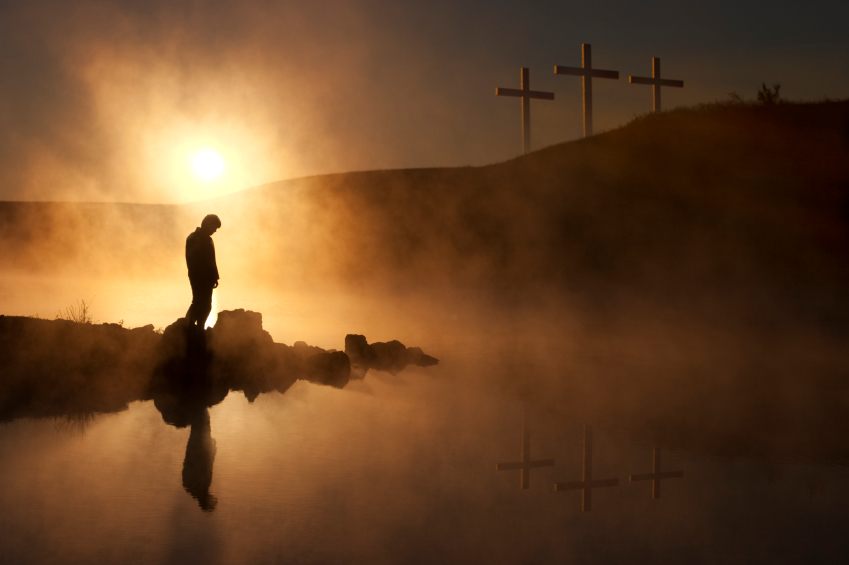
by Fr. Jonathan Cholcher
Our Lord said, “I am the way, the truth, and the life. No one comes to the Father except through me” (Jn. 14:6). He also said earlier before raising Lazarus, “I am the resurrection and the life. He who believes in Me, though he may die, he shall live. And whoever lives and believes in Me shall never die” (Jn. 11:25-26).
To the Jews in Capernaum, after feeding the 5,000, Jesus said, “This is the will of the Father who sent Me, that of all He has given Me I should lose nothing, but should raise it up at the last day. And this is the will of Him who sent Me, that everyone who sees the Son and believes in Him may have everlasting life; and I will raise him up at the last day” (Jn. 6:39-40).
Pontius Pilate sarcastically asked Christ Jesus who stood before him shortly before he delivered Him over to be crucified, “What is truth?” (Jn. 18:38). The Elder Sophrony reminds us that “truth” is not a what, a thing; rather, Truth is a Person, the Son of God in the flesh. The reason the Truth became one of us in the womb of the Virgin Mary, called all to the Kingdom of God in word and deed, and was crucified for the sins of the world, was ultimately to complete the truth by His Resurrection from the dead. The Resurrection of Christ is both the goal and the confirmation of the only truth that genuinely matters, freedom from sin and death in the joy of everlasting life with God.
The Roman procurator Pontius Pilate speaks for the world separated from true life with God. Following Jesus’ crucifixion and burial, the Jewish chief priests and Pharisees approached Pilate and said, “Sir, we remember, while He was still alive, how that deceiver said, ‘After three days I will rise.’ Therefore command that the tomb be made secure until the third day, lest His disciples come by night and steal Him away and say to the people, ‘He has risen from the dead.’ So the last deception will be worse than the first.” Pilate responded, “You have a guard; go your way, make it as secure as you know how” (Matt. 27:63-65).
To the world apart from God, including religious and civil leaders, Jesus Christ is a “deceiver,” His teachings a “deception,” and His influence something to be “secured” against. In the mock trial of Christ, the methods of a godless world were on full display. Jesus was arrested secretly by betrayal and force having committed no offense (Matt. 26:47-49, 55). His judges relied on false witnesses (Matt. 26:60) and cloaked themselves beneath a semblance of religious piety (Matt. 26:65-66), justifying their agenda by whatever religious or civil law was most expedient to use (Jn. 18:14, 28-31). Pilate knew Jesus was not guilty, yet abdicated to mob rule (Matt. 27:24; Mk. 15:10-15; Jn. 18:38; 19:15-16).
The crucifixion of Christ is that much more horrific not only because of His innocence, but because of the ease with which He was unjustly tried, tortured, and crucified by the authorities and the crowd. The authorities in possession of the justice system had a pre-determined outcome in mind, and they used the system in whatever way necessary to accomplish that outcome under a cover of legitimacy. The crowd likewise had a desired outcome of the proceedings, if only to satisfy their lust for blood and spectacle (Matt. 27:25; Mk. 15:29-32, 35-36).
The Truth who is Christ reveals how easily we have surrendered ourselves to rejection of God, self-love, self-gratification, self-justification, envy, anger, condemnation, expediency, violence, and morbid curiosity. The Cross of Christ is the ultimate proof of our dark spiritual mindset. The Resurrection of Christ is the ultimate proof that this spiritual darkness can and must be overcome, by confronting it, destroying its power, and rising anew in the life of Christ pleasing to God.
Our Lord told His disciples He would die and rise again. He appeared to them on the evening of the Resurrection behind locked doors and showed them His pierced hands and side (Jn. 20:19f.). At the giving of the Lord’s Supper before His arrest, Christ told His apostles that after His Resurrection He would go before them into Galilee. Thus we read at the end of the Gospel: “Then the eleven disciples (i.e., 12 minus Judas Iscariot who hanged himself) went away into Galilee, to the mountain which Jesus had appointed for them. When they saw Him, they worshiped Him; but some doubted” (Matt. 28:17; the original Greek reads “they doubted,” not just “some”). Even though Christ was clearly resurrected and alive, the disciples who watched Him die on the Cross still needed some convincing. Thus from Acts, chapter 1, we know that Jesus “also presented Himself alive after His suffering by many infallible proofs, being seen by [the apostles] during forty days and speaking of the things pertaining to the kingdom of God” (v. 3).
The Truth who is Christ is the reality of the Resurrection. The Resurrection who is Christ is the Truth, the only truth guiding and directing all other truths. Christ Jesus came not to affirm, improve, or make accommodations to our condition in this sinful, fallen, and dying world. Such a view of Christ is truly a deception. Christ came to liberate us from this world locked in systems of sin, death, and the devil, which finally lead to eternal torment. The Resurrection is our way to begin living in communion with the eternal God both now in this world and forevermore.
